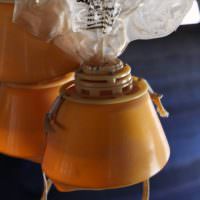Many frequent fliers find air travel to be a tiring experience. The ride to the airport, security screening, several hours buckled into a seat, followed by a tight connection in an airline hub, and then another couple of hours on a subsequent flight can take a lot out of a person. And yet pilots typically do this for about four days straight in a given week. It sounds exhausting. With the busy schedules, potential for delays, and a host of other factors, how do passengers know that their pilots get enough rest?
Following the tragic events of Colgan Air flight #3407 in Buffalo, New York back in February 2009, Congress and other groups began to question as to whether or not some pilots were receiving adequate rest or were possibly being overworked. As a result of in-depth investigations and extensive debate over the course of several years, new rules were created with the intent to effectively guarantee that all pilots would receive adequate rest, while placing additional limitations on how many hours they could work during a given day.
The legislation and subsequent regulations came to be known as Federal Aviation Regulation 117 or FAR 117 for short. These new rules are now the foundation for how pilot schedules are managed today. There are three main components to these rules that are relevant for our discussion: Rest time, Flight time, and Duty time. Each category has specific limitations, with the latter two taking into consideration what time the pilot starts his/her day as well as the type of flying that is being performed. Deciphering the language within these regulations can be a bit confusing, so here are the nuts and bolts of what was decided…
Rest
Regardless of any other circumstances, pilots must be given a minimum of ten hours free from work prior to reporting at the airport to operate a flight. Each ten hour rest period must include the opportunity for at least eight hours of uninterrupted sleep before coming to work in order to be legal to fly. This means that the pilot cannot be on call during this time. They have no obligation to answer the phone or respond to communications from the airline. If their rest period is disrupted by the airline or other factors (meaning that they are unable to get the rest that they need) then they are obligated to report this to the airline and have their schedule adjusted such that they will receive adequate rest before reporting to work. It’s very important to note that the pilots are able to do this without any fear of punishment or reprisal, because that right is protected by law and enforced by the Federal Aviation Administration, which has the authority to take action against the airline for any violations.
Each ten hour rest period must include the opportunity for at least eight hours of uninterrupted sleep before coming to work in order to be legal to fly.
Flight Time
The maximum number of hours that a pilot can fly in a given day can vary depending on a number of factors: time of day, international or domestic, number of pilots, etc. Flight time essentially represents the time that the aircraft is away from the gate and moving under its own power (passenger boarding and delays when the plane sits at the gate are not included). For practical purposes, the vast majority of pilots are limited to an absolute maximum of nine hours of flying in a day. That number will decrease for pilots who fly early in the morning or late at night. If it’s an international flight, there will likely be three or four pilots, which will enable them to collectively fly for up to about 17 hours. Of course, the pilots on those flights are provided rest breaks in a specially designated area on board the plane to ensure that there is always a rested and alert pair of pilots in the cockpit at all times.
Duty Time
While the duty time period does include flight time, it also consists of any time that the pilots spend performing work associated with the flight. Typically, this will begin about an hour before the first flight of the day and end about thirty minutes after the last flight of the day and includes all of the time in between. Under FAR 117, the maximum duty period for most pilots will be about 14 hours in a day for domestic flights. International flights may have limits up to 19 hours, while early morning or late-night domestic flights will have duty periods restricted to as little as 9 hours. These limits can be extended up to two hours under certain circumstances, but only with the concurrence of the pilots.
Pilots always retain the ability to recuse themselves from a given flight or flights, should they feel that they are fatigued and not sufficiently alert to continue working.
Ultimately, these regulations ensure that pilots are all but guaranteed to receive sufficient rest before reporting to work, while simultaneously limiting the work day such that pilots do not become fatigued or overworked. Even if flights become impacted by weather, delays, or other factors, there is one additional critical component: pilots always retain the ability to recuse themselves from a given flight or flights, should they feel that they are fatigued and not sufficiently alert to continue working. This exemption for the pilots was created in the interest of safety and is a part of the regulations; it was designed to insulate the pilots from being compelled to work by the airlines (should they find themselves to be anything less than fit for duty).
The bottom line is that FAR 117 represents a positive step forward that created a new safety-based, standardized minimum threshold for pilot work and rest requirements. As a result, passengers can feel confident that their pilots are well-rested, alert, and ready to work each and every flight.






